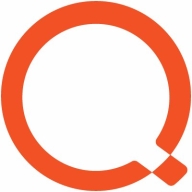


Find out in this report how the two Unified Endpoint Management (UEM) solutions compare in terms of features, pricing, service and support, easy of deployment, and ROI.
Everything we've gained from it makes my job easier day after day, and I see value in it as an engineer.
Importantly, when someone leaves the company, it helps protect document access on their devices.
Applications are deployed through Intune, and we see fewer tickets for common issues because we can resolve them through the solution.
The return on investment is seen in the quick access to information, good inventory management, and efficient systems management.
When a support ticket is submitted, it directly reaches someone with Intune support expertise.
When I contacted Microsoft, they had the same expertise, if not more, which is phenomenal because I felt heard and my problem was solved.
Sometimes, the support provided is excellent, and the representative is knowledgeable, while other times, the service needs improvement.
The customer service is very good, providing quick customer support in Spanish.
Support responds immediately, but I see that some engineers are new or they don't have experience collecting logs, so they take two to three days to come back.
The scalability of Microsoft Intune is ten out of ten.
Ideally, we want to automatically segregate devices based on user properties like primary use, but currently, dynamic groups seem limited to device properties.
It supports organizations with 200 endpoints and those with more than 15,000 endpoints.
The product is very scalable as it supports 10,000 thousand endpoints with just one appliance.
We have not experienced downtime, bugs, or glitches.
Microsoft Intune has been very stable.
A couple of years ago, the performance was not as good as it is now, but there are noticeable backend improvements.
Features like unlocking devices sometimes fail, and the support offered for other operating systems is insufficient.
There are communication issues, so you might start working with a feature without knowing if it will be deprecated six months from now.
Many third-party companies offer single-pane-of-glass reporting that shows you what your update environment looks like, how your patch is doing, application status, etc., but Intune's reporting is not intuitive.
The user interface needs improvement as customers have mentioned they do not like the interface since it is not an SMA-based interface.
Another concern is that support is getting reduced by Workspace ONE; some customers are saying there are support issues on Workspace ONE right now.
Introductory professional services, like a fast-track service, were included with our E5 membership, and there have been no additional costs.
The Intune suite and add-ons, such as batch management and remote help, are costly.
It costs approximately forty euros per user per month.
The pricing is in the middle range of the market, not too expensive but not the cheapest either.
Intune excels in configuration and compliance management for Windows 10, ensuring devices receive timely updates and adhere to organizational standards.
Dynamic groups allow us to set conditions for automatic membership, eliminating the need for user intervention or manual review and ensuring a seamless workflow.
Windows Autopatch is the most valuable because it removes the burden of patch management.
The most valuable features include simplicity, which makes systems management easier and faster, especially for device management.
In UEM, the most helpful part of Windows Management is the baseline policy and central script; using this, you can replace all the AD GPO policy.



Microsoft Intune provides centralized management of mobile devices and applications, ensuring security, compliance, and productivity through integration with Microsoft services like Microsoft 365 and Azure Active Directory.
Organizations use Intune for managing mobile devices and applications, enhancing security and compliance across platforms. With features like single sign-on, conditional access, and zero-touch deployment via Autopilot, it facilitates efficient operations. Intune's scalability, easy enrollment, and capabilities such as remote wipe support diverse device management, offering robust data protection and efficient operation. Despite its features, improvement areas include reporting, compatibility with non-Microsoft devices, and better support for macOS and Linux devices.
What are the key features of Microsoft Intune?
What benefits should users look for in reviews?
In industries such as finance, healthcare, and education, Microsoft Intune is implemented to ensure secure and compliant device management. Companies leverage its capabilities to deploy security policies and manage both corporate-owned and BYOD environments, facilitating a unified approach to data protection and compliance.
Quest KACE Systems Management Appliance is a comprehensive tool for managing IT endpoints. It facilitates asset management, software distribution, and endpoint tracking while offering remote access capabilities and a centralized help desk.
Quest KACE Systems Management Appliance is designed for organizations that need efficient endpoint management. It offers a range of features like inventory tracking, automated patch management, and ticketing. By integrating with remote access tools such as Bomgar, Quest KACE helps reduce manual tasks involved in managing software updates and system deployments. Although it faces challenges in scalability and requires improvements in integration and reporting, it remains a versatile choice for asset tracking and endpoint administration.
What are Quest KACE SMA's key features?
What benefits should users consider?
Quest KACE Systems Management Appliance is implemented across industries for managing IT assets and endpoints, particularly where remote management and compliance are critical. It's employed in healthcare, education, and government sectors for efficient patch management, inventory control, and software deployment, aiding organizations in managing security accreditations and centralizing help desk operations.
VMware Workspace ONE is an intelligence-driven digital workspace platform that delivers any app on any device. It integrates access control, multi-platform endpoint management, and application management. With the VMware Workspace ONE platform, IT teams can deliver a digital workspace that includes the devices and apps of the company’s choice, but with security and control.
VMware Workspace ONE is available:
VMware Workspace ONE Key Features
VMware Workspace ONE Benefits
Some of the benefits of using VMware Workspace ONE include:
Workspace ONE Components
Reviews from Real Users
Below is some feedback from our PeerSpot users who are currently using the solution:
PeerSpot user Patrick B., Cybersecurity Architect at a tech services company, says, "Its UI is extremely easy to use whether you're an advanced user or a novice user. When I first opened it up and had to learn the product, I was easily a novice. By the end of the third month, I was digging into the backend of the system and using it as a highly advanced user to accomplish what I needed to accomplish, and I was able to do it through the UI mostly."
Roshan T., Partner Manager North America at a tech company, mentions how satisfied he is with the product, saying, "You can put all your applications on a mobile device, be it a phone or tablet. It is secure and easy to use. Because it is centrally managed, you don't have to do any configuration on the phone. I just got the phone and connected to the central applications. I just downloaded one thing and everything got rolled out. Email, calendar, and other things were deployed centrally. If you don't have AirWatch, you have to configure your phone manually. For example, you need to deploy and configure your email manually and then synchronize everything. It is much simpler when a mobile device is centrally managed."
We monitor all Unified Endpoint Management (UEM) reviews to prevent fraudulent reviews and keep review quality high. We do not post reviews by company employees or direct competitors. We validate each review for authenticity via cross-reference with LinkedIn, and personal follow-up with the reviewer when necessary.